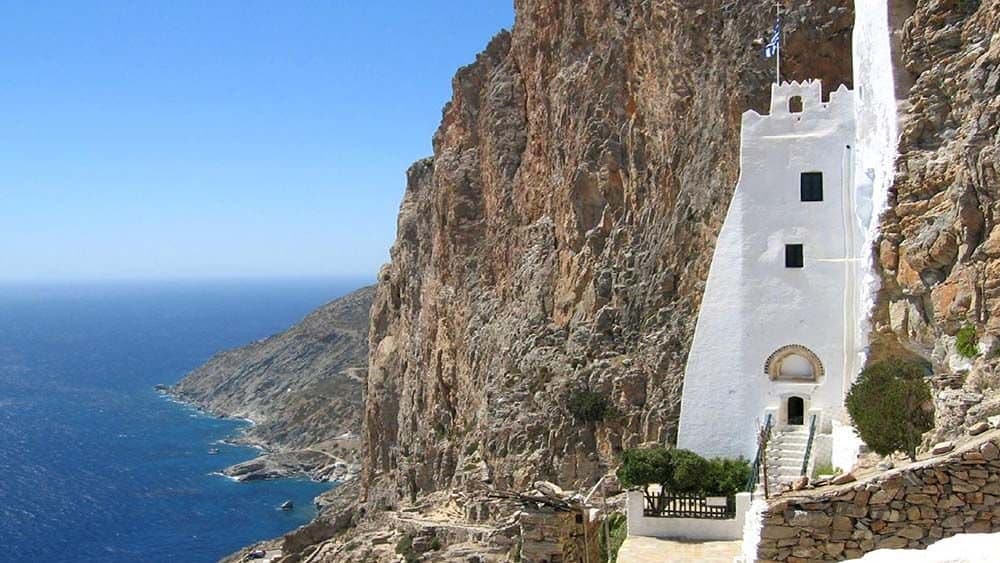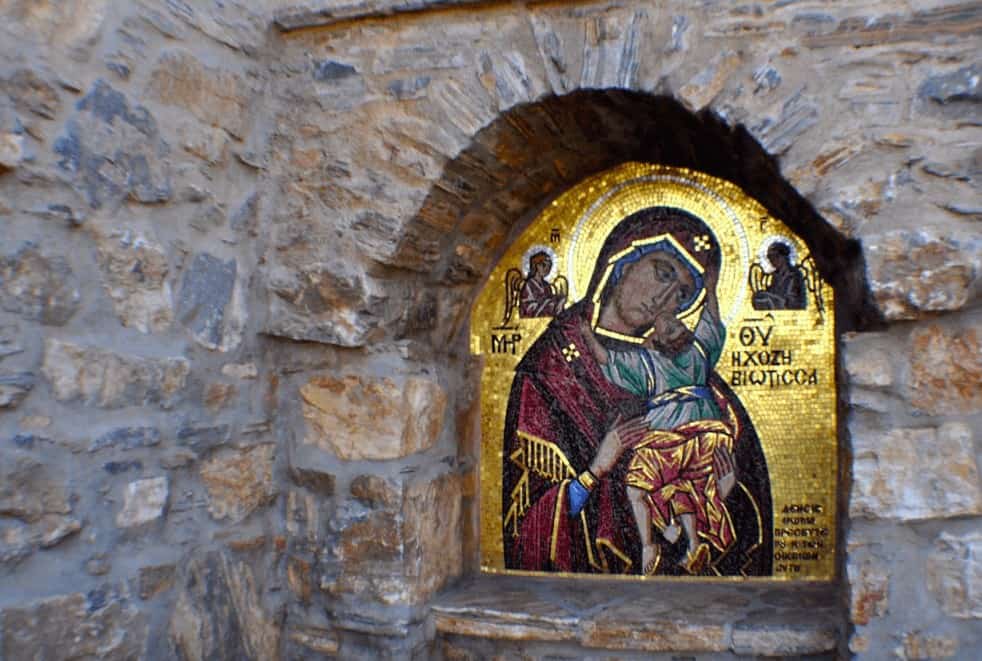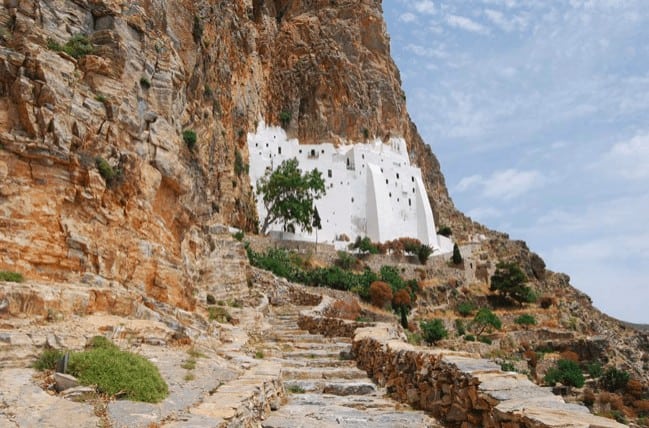
Panagia Hozoviotissa on Amorgos island is one of the oldest and most important monasteries of the Aegean, built in 1027 on the foot of a giant steep rock and renovated 1088, built by Alexius Comnenus I, it’s literally hanging on the cliff side 300 metres above the sea. The monastery was created in honour of Panagia (Virgin Mary) the patron saint of the island. The icon is carried around to all the villages on the island every year.
This beautiful chapel combines mother nature and man’s creation, as the monastery symbolises a tribute to the Holy Mother. Built into the face of a cliff, it provides a breathtaking view of the crystal blue waters of the Aegean sea.
It’s the pride and joy of Amorgos, with its pristine walls lined with portraits of monks and other leaders, the smell of incense and numerous little treasures. Today only four monks, who act as guardians of this architectural marvel are in residence and on weekdays welcome visitors with cool water, Amorgos raki (local spirit) and loukoumia (Greek sweets).

A low marble doorway leads to a staircase, that leads to the higher levels onto the chapel where treasures and icons are kept. Some of the holy treasure inside the monastery include the icon of Panagia Portaitissa, dated back to the 15th century, a work of the school of Cretan, also known as Theotokio or the Mother of God, and the Gennadio’s Prayer, dating back to 1619. It’s filled with many artifacts, historical masterpieces, architecture, and history.
The reason behind the building of the monastery was the arrival of the icon of Panagia. According to the surviving written records, the icon came from Hozova (hozovo) in Palestine, and the monastery translates to Virgin Mary of Hozova.
It’s said that the icon reached the island in a boat which had run ashore, directly below the point on which the monastery stands today. Two locals found the icon and news quickly spread from island to island. When the news reached Constantinople in 1088, the Emperor ordered the construction of the monastery.

The monastery began to be built near the ocean where the icon had been found. Yet each day the builders came to work, whatever they had done the day prior was mysteriously knocked down by mother nature. This happened for a few days. Finally, the master builder lost his tool bag. It was found hanging off a nail on the cliff above. They all believed this was a miracle and a sign from Panagia to build the monastery up higher.
Grand and well preserved, it is considered the most striking monastery in the Aegean not only for its unique construction on the sheer cliffside but for the manner in which its eight floors grip the rock for support.
The originality of its architecture is that whereas the breadth of the façade is over 40 m, the west wall, where the entrance is, measures no more than 5 m. The building comprises over a hundred rooms, including the monks’ cells, refectories, kitchens, storerooms, cisterns, guest cells, a library and luggage storage.
Today only four monks are in residence, who on weekdays welcome visitors with cool water, Amorgos raki, and Turkish delight. The view from the balcony next to the chapel is breathtaking.

